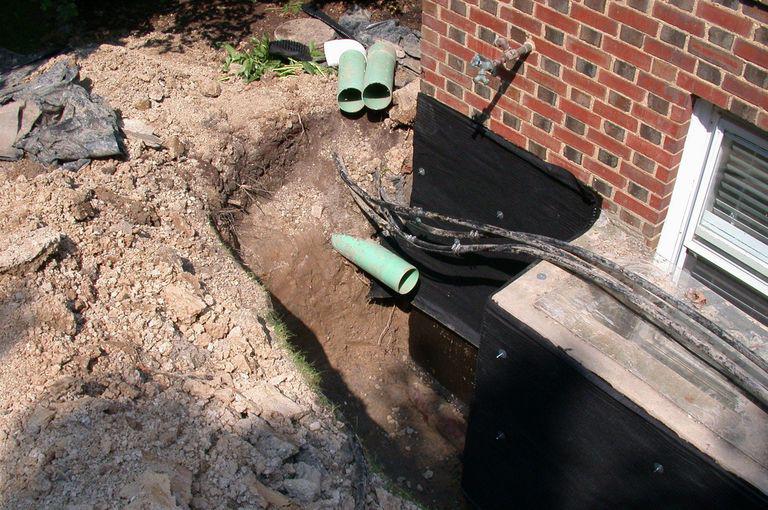When planning any paved surface—be it a patio, driveway, walkway, or parking lot—homeowners often focus on design, material selection, and installation. While these elements are undeniably important, there’s one crucial component that frequently gets overlooked: drainage. Yet if there’s one thing every paving contractor in New Jersey can agree on, it’s that proper drainage is essential to the success and longevity of any paved structure.
New Jersey’s weather patterns can be unpredictable. From heavy rainfalls in spring to snowmelt in winter, outdoor surfaces must contend with water year-round. Without effective drainage, water can cause widespread damage to paved areas, leading to premature cracking, sinking, or even structural failure. This article explores in detail why proper drainage is essential for all paved surfaces in NJ and how it can save you from costly repairs, safety hazards, and aesthetic deterioration.
Understanding the Role of Drainage in Paving Projects
Drainage is the method by which water is directed away from a paved surface to prevent pooling, erosion, and sub-surface damage. This may sound like a technical concern best left to contractors, but for property owners, understanding how drainage works is critical to making informed decisions. Whether you are installing a new driveway or renovating an existing patio, knowing that proper drainage is essential will guide how your project is designed and executed.
A well-drained paved surface starts with slope and grading. Water must have a place to go, and your surface needs to be tilted subtly—usually between 1% to 2%—to allow gravity to do the work. Beneath the pavers, a compacted base layer of gravel and sand not only provides support but also allows for water infiltration and movement. Additionally, features such as catch basins, French drains, swales, and permeable paver systems may be incorporated to control larger volumes of water.
Ignoring this process results in water getting trapped beneath or on top of the surface, leading to significant damage over time. It’s not just about avoiding puddles; proper drainage is essential to the entire structural integrity of your paved surface.
The NJ Climate and Drainage Challenges
New Jersey’s four-season climate creates unique challenges when it comes to paving and drainage. In spring and summer, heavy rains can overwhelm poorly drained areas, causing erosion, flooding, and shifting. In the colder months, water that infiltrates cracks or gaps can freeze, expand, and cause surfaces to heave or crack—a phenomenon known as freeze-thaw damage.
For homeowners and property managers in NJ, this means every paving project must be designed with the local climate in mind. The fact that proper drainage is essential becomes clear when you consider that even the highest-quality materials can fail if water is not properly managed. Pavers may sink or loosen, concrete slabs may crack, and asphalt surfaces may deteriorate much faster if drainage isn’t correctly addressed during installation.
Consequences of Poor Drainage on Paved Surfaces
There’s no overstating the damage that poor drainage can cause. It’s one of the leading reasons paved surfaces fail prematurely. While the visual signs may start small, the consequences compound quickly if water isn’t effectively directed away.
Standing water is often the first red flag. Puddles on a patio or driveway may seem like a minor annoyance, but they signal a larger problem. Constant exposure to water weakens the surface, softens the base layers, and attracts mold and algae. Over time, these issues compromise both aesthetics and safety.
In more severe cases, inadequate drainage causes subsurface erosion. Water that infiltrates below the paving material will displace the base layers and cause uneven settling. This results in a bumpy, cracked surface that not only looks unattractive but also becomes a tripping hazard. In driveways and parking areas, poor drainage can lead to potholes and edge failures.
Clearly, proper drainage is essential not just for appearance but for functionality and safety. The costs of correcting drainage problems far exceed the investment required to do it right the first time.
Why Proper Drainage Is Essential for Patios
Patios are often designed as social spaces—places for dining, relaxing, or entertaining. But if they’re not properly drained, they become wet, slippery, and potentially unsafe. Even worse, they can damage surrounding landscaping and create soil erosion near the home’s foundation.
When patios are designed without adequate slope or permeable surfaces, water will sit on top and eventually find a way into nearby structures. If the patio is located adjacent to the house, poor drainage can even cause basement leaks or foundation damage.
Contractors who understand that proper drainage is essential will build in sloped surfaces, integrate channel drains or drain tiles, and use materials that help manage moisture. In New Jersey, where the soil type and topography vary, it’s especially important to work with pros who can assess your site and recommend the best drainage solutions for your patio.
Why Proper Drainage Is Essential for Driveways
Driveways take a lot of abuse, especially in areas like New Jersey that see a mix of rain, snow, and ice. When a driveway isn’t equipped to handle water runoff, it begins to break down from the inside out. Water finds its way into cracks, and during freeze-thaw cycles, those cracks expand and deepen.
Edge erosion is also a common problem. Without curb edging or drainage trenches, water running off the driveway can wash away surrounding soil, undermining the driveway’s foundation. This can lead to crumbling at the edges, paver displacement, and eventually full surface failure.
Professionals understand that proper drainage is essential for protecting the life of your driveway. By building in appropriate slope, choosing permeable materials when necessary, and adding edge controls, they ensure your investment lasts for decades instead of years.
Why Proper Drainage Is Essential for Walkways and Garden Paths
Walkways are meant to provide a safe, clean path through your yard or garden. But when they’re poorly drained, they can become slick, sunken, or overgrown with weeds and algae. These are some of the most overlooked areas when it comes to drainage planning—yet they are just as vulnerable to damage as larger paved surfaces.
Especially in shaded or damp areas of the yard, water can collect and cause pavers to sink, weeds to grow, and algae to develop. Over time, these issues make walkways unsafe and unattractive. When properly installed, walkways include slope, edge restraints, and a base that encourages water dispersion. For these reasons, proper drainage is essential to maintain the safety, beauty, and usability of your garden or landscape paths.
Key Drainage Features That Prevent Problems
This section includes the only bullet points in the post, as requested.
To help manage water effectively, professionals integrate a variety of drainage features into paved surface designs:
🗸 Slope and Grading – Slight slopes direct water away from the home and prevent pooling on the surface.
🗸 French Drains – Subsurface trenches with gravel and perforated pipes carry water away efficiently.
🗸 Channel Drains – Installed at the surface level, these collect water from hardscapes and direct it to safe discharge areas.
🗸 Permeable Pavers – These allow water to seep through the surface into a drainage layer below.
🗸 Swales and Gutters – Shallow depressions or edge features that catch and redirect water.
🗸 Proper Base Layers – Compacted gravel and sand bases that facilitate drainage and support the structure.
Each of these components contributes to a holistic system, reinforcing the fact that proper drainage is essential for every paved project.
Long-Term Cost Savings and Performance
Some homeowners view drainage planning as an optional upgrade or an area to cut costs. However, this mindset almost always leads to bigger expenses down the road. Repairing water-damaged paving is far more expensive than installing drainage correctly from the beginning.
Additionally, paving surfaces that include drainage solutions last significantly longer and require less maintenance. You save money on repairs, resealing, and replacement. You also avoid potential liability from slip-and-fall accidents or vehicle damage due to surface failure.
When it comes to smart construction and long-term value, proper drainage is essential not only for protecting your hardscape but also for protecting your budget.
Amazon Construction Corp: NJ’s Drainage and Paving Experts
At Amazon Construction Corp, we understand that proper drainage is essential to every outdoor project. Whether we’re installing a driveway in Summit, a backyard patio in Princeton, or a retaining wall in Edison, we plan drainage from day one. We assess the slope of your property, soil conditions, and anticipated water flow to create customized solutions that ensure performance and durability.
With over 30 years of experience, we’ve seen the damage improper drainage can cause—and we’re committed to preventing those issues before they start. We take pride in delivering outdoor spaces that not only look great but also perform exceptionally in New Jersey’s challenging weather.
Contact Amazon Construction Corp Today
If you’re planning a new patio, driveway, walkway, or retaining wall, make sure drainage is part of the conversation. Contact Amazon Construction Corp today and let our team show you why proper drainage is essential to the success of your next paving project.
📞 Phone: 848.342.4357
📧 Email: amazonconstructioncorp@gmail.com
🌐 Website: www.amazonpavingandmasonry.com
📍 Serving: Homeowners and commercial clients throughout New Jersey





0 Comments